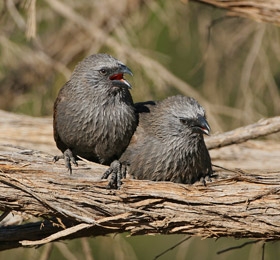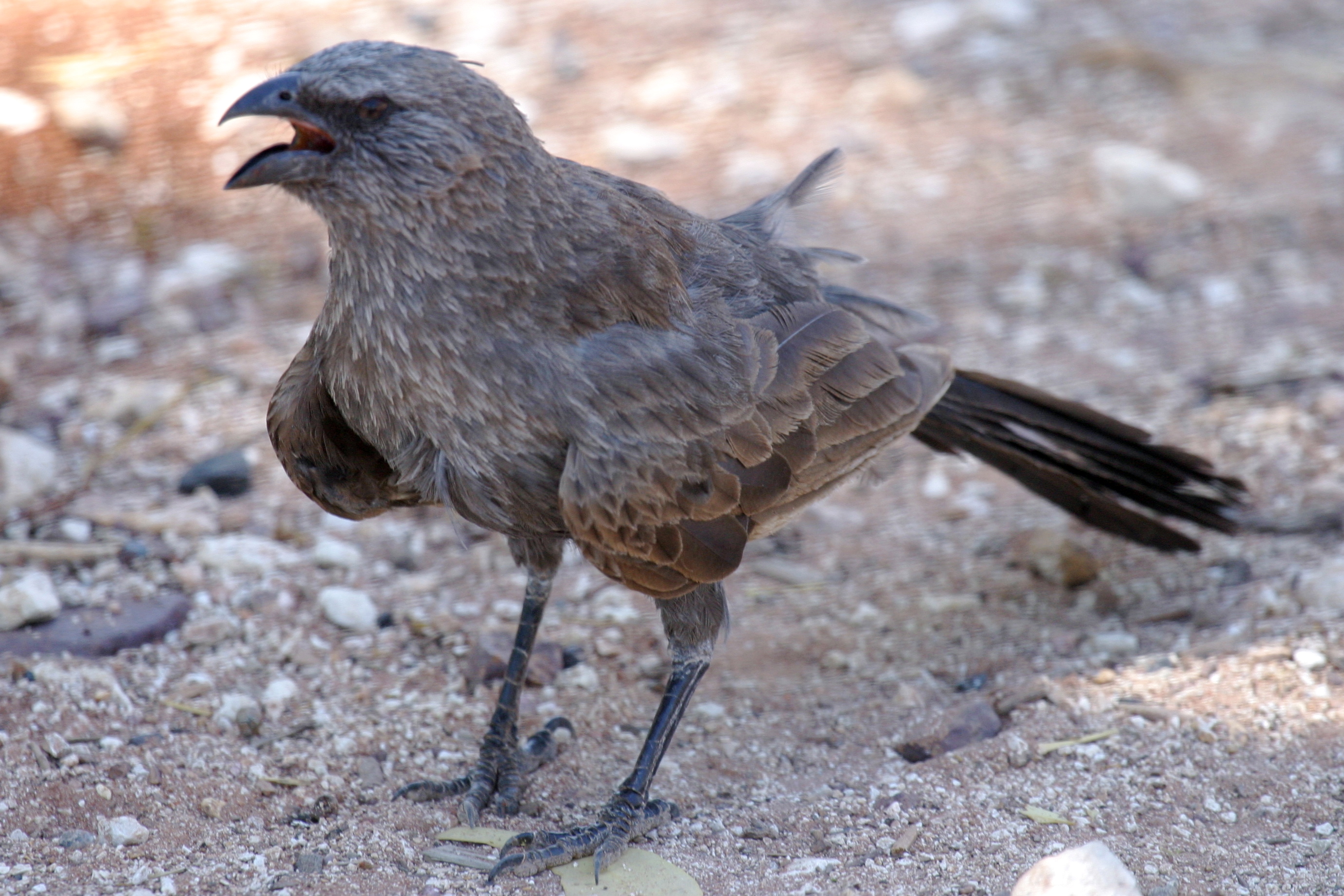
Struthidea cinerea
SUBFAMILY
Struthideinae
TAXONOMY
Struthidea cinerea Gould, 1837. A smaller isolated population in
the north of Australia may constitute a subspecies with birds
that are slightly larger but with smaller bills than the eastern
population.
OTHER COMMON NAMES
English; Gray jumper; French: Apфtre gris; German: Gimpelhдher;
Spanish: Ave Apуstol.
PHYSICAL CHARACTERISTICS
Mottled ashy gray plumage with brown wings, black tail, and a
short, stubby, black bill. Males and females have similar
plumage. Juveniles have fluffy plumage and brown eyes which
change to gray after their second year. Adults are 11–13 in
(29–33 cm) long and weigh 4–5 oz (120–140 g).
DISTRIBUTION
Apostlebirds occur in the inland of eastern Australia, and in a
smaller, isolated population in northern Australia.
HABITAT
Dry, open forest with some water.
BEHAVIOR
Apostlebirds are gregarious birds, foraging, breeding and roosting
together. Their name stems from the belief that they live in
groups of twelve, though group sizes vary from about three to
20. Apostlebirds are sedentary, defending a territory during the
breeding season and wandering further afield after nesting finishes,
when groups may aggregate at sources of food or water.
FEEDING ECOLOGY AND DIET
Apostlebirds are predominantly granivorous, collecting seeds
from the ground and crushing them with their stout bills.
They also eat insects opportunistically.
REPRODUCTIVE BIOLOGY
Like other members of the group, apostlebirds build nests of
mud. Graeme Chapman’s study showed that family members
share nest building, incubation, and feeding of chicks. Large
groups may produce several broods in a single breeding
season.
CONSERVATION STATUS
Not threatened.
SIGNIFICANCE TO HUMANS
None known.
Other popular Animals
Photo Gallery of - Apostlebird




 Animalia Life
Animalia Life